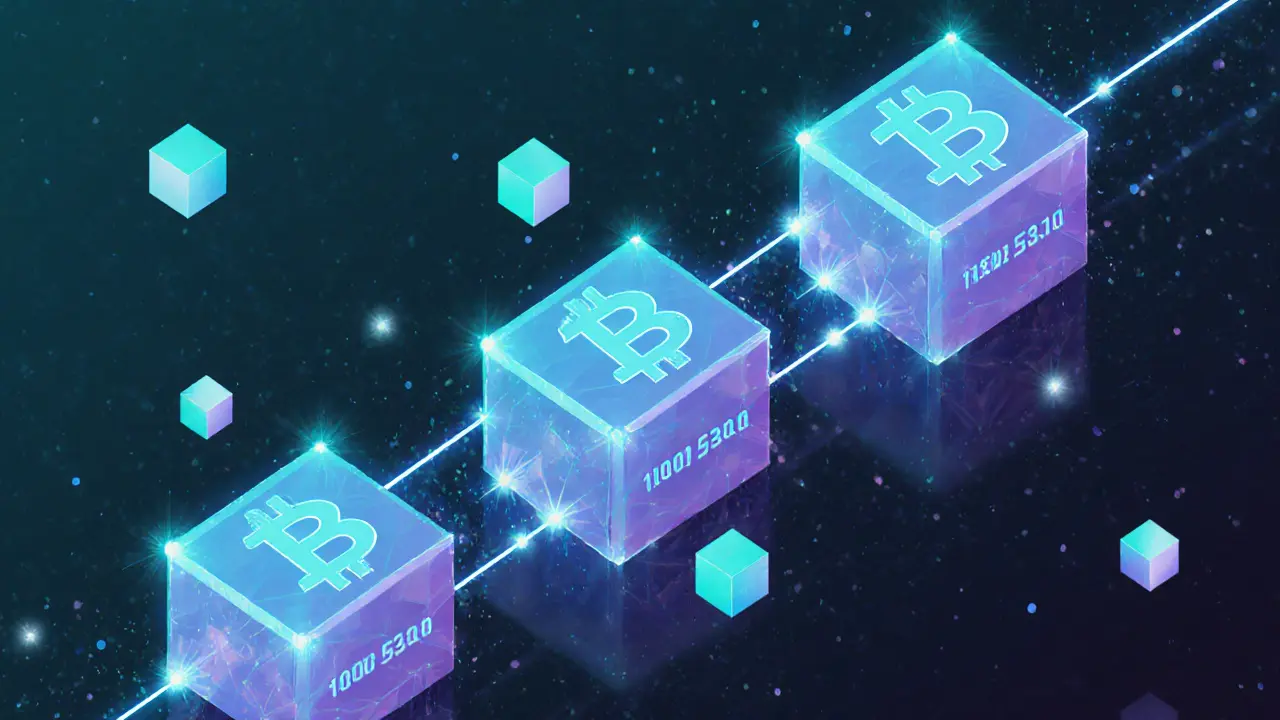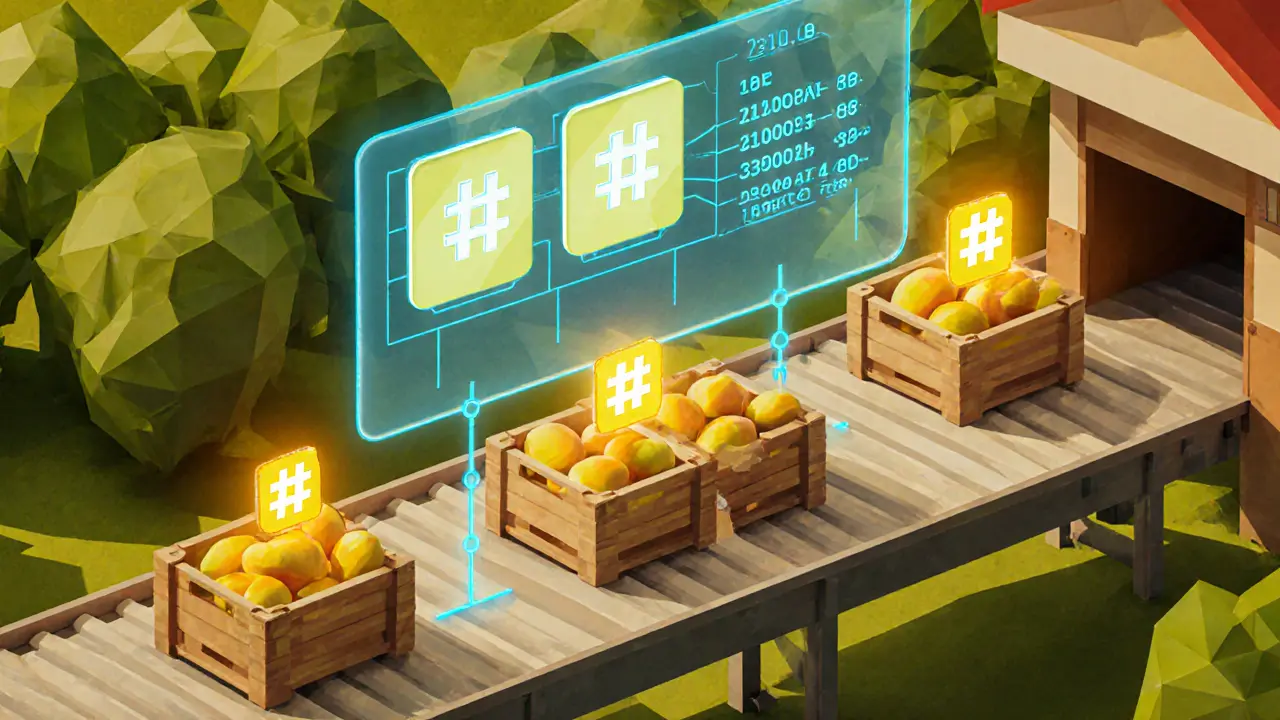Blockchain Technology Guide: How It Works, Types & Real‑World Uses
 Oct, 13 2025
Oct, 13 2025
Blockchain Type Advisor
Which Blockchain Type is Right for You?
Answer a few questions to determine the best blockchain approach for your business needs
When you hear Blockchain Technology is a distributed ledger system that records transactions in an immutable chain of blocks, you might picture Bitcoin price charts. But the truth is far broader - it’s a way to share trustworthy data without a central gatekeeper.
Understanding blockchain technology is essential for today’s digital transformation because it replaces the need for a trusted third party with cryptographic proof and consensus among participants.
What Makes a Blockchain Tick?
A blockchain follows four core steps, as outlined by major cloud providers. First, a transaction - think of a digital contract that notes who, what, when, where and why - gets packaged with a unique identifier. Next, the network runs a Consensus Mechanism a set of rules that decides which version of the ledger is authoritative. Depending on the network type, anywhere from 51% to 100% of nodes must agree before the record is accepted.
Once approved, the transaction joins a block that contains a timestamp, the hash of the previous block and a new cryptographic hash. That hash links the block to its predecessor - tamper with one block and the whole chain breaks, because every subsequent hash would change.
The finished block is then broadcast to every participant, updating their copy of the ledger in near‑real time. This distribution eliminates a single point of failure and gives every stakeholder a single source of truth.
Public, Private and Consortium Blockchains
Not all blockchains look the same. The three main categories differ in who can read, write and validate data.
| Aspect | Public | Private | Consortium |
|---|---|---|---|
| Access | Anyone can join | Invitation‑only | Selected group of organisations |
| Governance | Decentralized (open‑source community) | Centralised (single authority) | Hybrid (shared rules) |
| Typical Throughput | 4‑30TPS | Up to 1,000TPS | 1,000‑3,500TPS |
| Use Cases | Cryptocurrencies, open finance | Enterprise supply‑chain, internal asset tracking | Inter‑bank settlement, trade finance |
| Privacy | Transparent (pseudonymous) | Permissioned data visibility | Confidential channels for members |
Public networks like Bitcoin the first cryptocurrency that introduced blockchain in 2009 excel at trustless value transfer but struggle with speed. Private solutions such as Hyperledger Fabric an enterprise‑grade framework that supports permissioned ledgers and modular consensus can handle thousands of transactions per second, making them attractive for supply‑chain or finance back‑ends. Consortium models, often built on Corda a platform designed for regulated financial institutions, strike a balance by limiting participants while still offering shared governance.
Consensus: Proof‑of‑Work, Proof‑of‑Stake and Beyond
Choosing a consensus algorithm is like picking a traffic rule for how blocks get added.
Proof‑of‑Work (PoW) requires miners to solve a computational puzzle before a block is accepted powers Bitcoin. It’s extremely secure - breaking the chain would need more hashing power than exists globally - but it burns huge energy (about 707kWh per Bitcoin transaction, according to a 2024 World Economic Forum report).
Proof‑of‑Stake (PoS) lets validators lock up a stake of cryptocurrency as collateral instead of solving puzzles. Ethereum’s “The Merge” in 2022 switched to PoS, slashing energy use by over 99% and raising throughput to roughly 30TPS on‑chain.
Enterprise platforms often skip pure PoW/PoS and use Byzantine Fault Tolerance (BFT) a family of algorithms that achieve consensus as long as less than one‑third of nodes act maliciously. Hyperledger Fabric’s “Solo” and “Raft” orderers are examples, delivering sub‑second finality for business processes.
Smart Contracts - Code That Executes Itself
Beyond moving money, blockchains can run Smart Contracts self‑executing code that enforces the terms of an agreement automatically. The most famous playground is Ethereum a programmable public blockchain that introduced the Solidity language. Developers write contracts in Solidity, then deploy them to the network where they become immutable and tamper‑proof.
Enterprise versions, like Hyperledger Fabric’s chaincode written in Go or Java, let companies embed business logic without exposing proprietary code publicly. However, debugging can be painful - a 2024 Reddit thread showed developers spending weeks chasing a single off‑by‑one error in a Solidity contract.
Real‑World Use Cases That Actually Move the Needle
Supply‑chain tracking is the poster child. Walmart piloted a blockchain for mango provenance and cut verification time from seven days to under three seconds. Finance sees faster cross‑border settlement - a 2023 IBM study reported a 40‑65% reduction in reconciliation time for banks that adopted blockchain.
Digital identity is another hot spot. Governments in Estonia and the UAE are experimenting with blockchain‑backed IDs that let citizens control their data while still proving citizenship to services.
On the flip side, mass‑market consumer apps still hit scalability walls. A 2024 PwC case study found that 92% of high‑volume supply‑chain projects needed off‑chain databases to store bulk sensor data, keeping the blockchain lean for only the critical “hash of the hash”.
Benefits, Drawbacks and the Bottom Line
In short, blockchain offers three big wins: decentralization eliminates a single point of failure, transparency enables audit trails without exposing raw data, and immutability prevents retroactive changes. Those strengths translate into real cost cuts - Deloitte surveyed executives who said 30‑50% lower audit expenses after going live.
But the technology isn’t a silver bullet. Throughput remains low for public networks, integration with legacy systems is often cited as the biggest hurdle, and regulatory uncertainty still looms. A 2023 McKinsey review warned that 70% of enterprise projects falter because the tech doesn’t match the business problem.

Adoption Trends, Market Size and What’s Next
According to Grand View Research, the global blockchain market was worth $17.5billion in 2023 and is growing at a 56% compound annual rate. Enterprises in finance (38%), supply‑chain (29%) and government (17%) lead deployments. By 2028, the World Economic Forum predicts 55% of large organisations will run at least one blockchain‑enabled process.
Quantum computers pose a long‑term risk - NIST estimates current 256‑bit hashes could become vulnerable by 2030. Meanwhile, interoperability remains weak; only about 22% of networks can talk to each other without a middleware layer.
Despite the challenges, the “Slope of Enlightenment” on Gartner’s 2024 Hype Cycle suggests mainstream adoption will arrive between 2026‑2028, driven by layer‑2 scaling solutions, better key‑management services and clearer regulatory frameworks like the EU’s MiCA rules.
Getting Started - Your First Blockchain Project Checklist
- Define the business problem. Ask yourself if you need trust‑less data sharing or just a better database.
- Pick a network type - public for open finance, private for internal asset tracking, consortium for industry‑wide standards.
- Select a consensus algorithm that matches performance and security needs.
- Choose a platform (Ethereum, Hyperledger Fabric, Corda) and language (Solidity, Go, Java).
- Plan for integration - allocate 40‑60% of the timeline to re‑engineer existing processes.
- Secure key management early; most breaches stem from poorly protected private keys.
- Run a pilot with clear success metrics (e.g., 30% faster reconciliation, 50% reduced audit cost).
Following this checklist can shave months off a typical 6‑18month rollout and give you a realistic chance to move beyond the pilot phase.
Frequently Asked Questions
How does a blockchain differ from a traditional database?
A traditional database is centrally controlled, allowing a single admin to edit or delete records. A blockchain stores data in blocks that are cryptographically linked, so once a record is written, changing it would break the chain. This creates immutable, tamper‑proof history, but it also means lower transaction speed compared with high‑throughput relational databases.
What are the main consensus mechanisms and when should I use each?
Proof‑of‑Work is best for open, permissionless networks where security outweighs energy cost. Proof‑of‑Stake suits platforms that need scalability and lower power consumption, like modern DeFi apps. Byzantine Fault Tolerance variants are ideal for private or consortium settings that require fast finality and can control the number of validators.
Can blockchain replace all my existing IT systems?
No. Blockchain shines when multiple parties need a shared, trustworthy record without a single authority. For high‑speed, high‑volume data (like sensor streams), a conventional database or data lake is still the right tool, with the blockchain handling only the critical proof of integrity.
What skills does my team need to build a blockchain solution?
Beyond standard software engineering, you’ll need cryptography basics (hash functions, digital signatures), knowledge of distributed systems, and specific language expertise - Solidity for Ethereum, Go/Java for Hyperledger Fabric, or Kotlin for Corda. Many firms also hire external security auditors for smart‑contract code reviews.
How do regulations affect blockchain projects?
Regulations vary by region. The EU’s MiCA framework now defines crypto‑asset categories and AML requirements, while the US relies on SEC and CFTC guidance. Compliance often means implementing Know‑Your‑Customer checks, transaction monitoring and sometimes limiting public access to data.
Ready to test the waters? Pick a low‑risk use case, follow the checklist, and you’ll see whether the promise of a tamper‑proof, shared ledger lives up to the hype.


Lena Vega
October 13, 2025 AT 02:09The guide does a solid job outlining the main blockchain types.